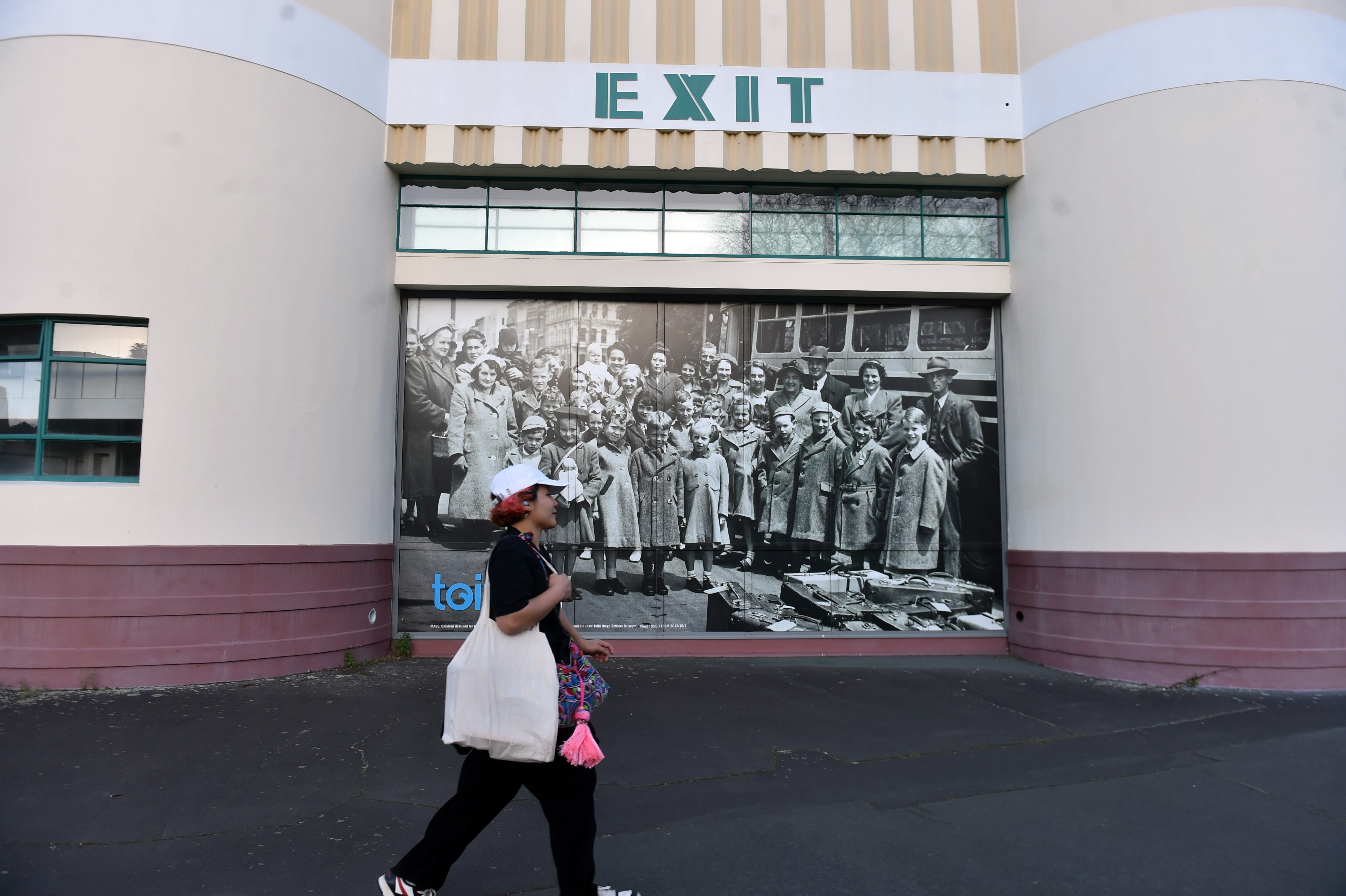
Dunedin's former bus station, the art deco New Zealand Railways Road Services Building, forming part of the Toitū Otago Settlers Museum, is sporting a new life-size image on its facade.
Superimposed on the doors of the original exit is a photo of a group of children, accompanied by their parents, smiling for the camera before they step on to the NZR Road Services bus to be spirited away to the Roxburgh Health Camp.
The year is 1955. Although the children are all wrapped up warm in their coats, the cooler autumnal weather is yet to arrive, as evidenced by the Queen’s Gardens elms in the photo yet to shed their leaves.
In the foreground, the children’s cluster of tagged suitcases are ready to be loaded on the bus for the trip.
In the front row, second from the left, with brown velvet trim on her coat collar and pockets and white ribbon in her hair, is 6-year-old Joan Fogarty.
Joan, now 76 and living in Auckland, gave this photo to Toitu’s curator, Sean Brosnahan, who saw its value as a worthy showpiece with connections to the old bus station.
Also in the centre of the photo, in her dark overcoat, is Joan’s mother, Audrey Fogarty, now 96 and still living in her own home in St Kilda.
No doubt other smiling faces can be identified by some Otago Daily Times readers.
The Roxburgh Health Camp was opened in 1941 as part of a government move to establish permanent health camps around the country to commemorate the late King George V.
General child health concerns raised by a school nurse or family doctor could prompt a referral to a health camp.
Health camps had existed earlier, run mainly by committees of voluntary organisations.
In the 1930s, the Waikouaiti Children’s Camp Association ran month-long summer camps at the local racing club. Initially, the totalisator building was used for the children’s sleeping accommodation, but later, an assembly hall and basic dormitories were erected on the racecourse grounds.
One of the highlights was ice cream from Dunedin’s Crystal Ice Cream Co, sent up by train daily to the camp and served up twice a day. Life was tough then.
The Roxburgh Health Camp complex in Ancrum St, in its Central Otago landscape, was the first in the country to be purpose-built as a year-round facility.
Made up of four main buildings surrounding an inner courtyard, the facilities consisted of a school, dining and common room, two dormitories, swimming pool, playing fields and playground equipment.
In the 1940s and 1950s, girls and boys between the ages of 5 and 14 stayed at the Roxburgh camp for up to three months, and parents were generally discouraged from visiting, with the result that homesickness was inevitable.
For some children, the experience of the health camp in those early decades was filled with fond memories of enjoyable meals, play activities and visits to orchards and the Roxburgh Hydro Dam.
Joan Fogarty was in primer four at the camp school and found the teachers kind and the whole experience positive, but like many of the children, she did not know why she was there.
Others, as adults, have later shared their memories of negative experiences at the camp in those early decades.
In recent years claims, some dating to the 1950s, have emerged of physical and emotional mistreatment and sexual abuse.
Positive images and awareness of the health camps were brought into the consciousness of the public through the sale of health stamps which were an important source of funding.
The Roxburgh Health Camp was depicted on a set of two stamps in 1948, showing children happily playing leapfrog and other outdoor activities while a boy is sunning himself in the foreground.
In the 1950s, happy healthy images of Princess Anne and Prince Charles featured on the health stamps as well as tramping, camping and swimming activities.
The post-war baby boomer years were the heyday period for the health camps, but subsequent decades saw increasing challenges such as changing societal attitudes, waning political support and inadequate funding.
In 2001, the government handed the children’s health camps over to a charitable trust, Stand Children Services Tū Māia, which later rebranded the camps as children’s villages.
With increasing operational costs and government reluctance to increase funding, the writing was on the wall.
In 2018, despite a vigorous fight by the southern mayors and the Central Otago community, the Roxburgh children’s village was closed after 77 years of serving the health needs of children in the southern region.
Today, while no longer providing residential care for vulnerable children south of the Waitaki, Stand Tū Māia continues to provide holistic wraparound trauma services and a range of programmes such as Theraplay and Seasons for Growth.
What has not changed, as you study the faces of those Roxburgh-bound girls and boys in the photo on the old bus station facade, taken 70 years ago, is the need to not only support our children to be safe and healthy but also to ensure their social and emotional wellbeing.
■ Tony Eyre is a Dunedin writer and author of The Book Collector: Reading and Living with Literature.











